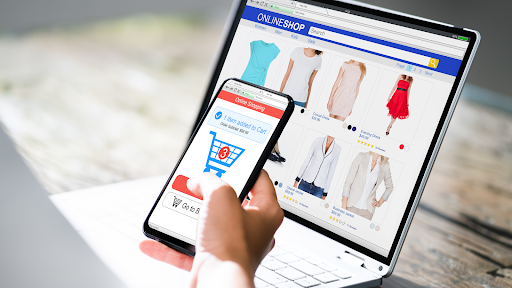The importance of marketing attribution is to study how customer touchpoints drive conversions.
It measures each channel effectiveness and assigns credits to the touchpoints that lead the customer to convert.
This allows marketers to better map their customer journey and optimize their marketing campaigns.
Below are the basic 10 marketing attribution models.
- First Touch Attribution
- Lead Creation touch attribution
- Last touch attribution (Opportunity creation touch)
- Last Non-Direct touch attribution
- Last [Insert Marketing Channel] Touch Attribution
- Linear Attribution
- The Time Decay Conversion
- U-Shaped (Position-Based) Attribution
- W-Shaped Attribution
- Full-Path (Z-Shaped) Attribution
1. First Touch Attribution
This model gives credit to all the marketing efforts that pushed the prospect to interact with the first page.
It gives emphasis on the top of the funnel where awareness is created.
Its drawback is the inaccuracy between the first touch and conversion. For example, as the cookie expires within a 30 to 90-day period, this model is giving attribution to the first touch within this period and NOT the true first touch where conversion might take greater than 90 days. (i.e: If you are using conversion tracking using Google Analytics).
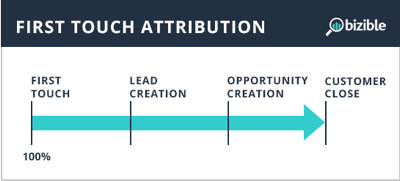
2. Lead Creation Touch Attribution
This model helps you determine the marketing channels that drive lead conversions.
However as there’s a lot more than just a lead signup or creation, this remains a small part in the customer journey so it’s unrealistic to give 100% credit to lead creation only.
Also this model may often be confused with the first touch model because marketing automation platforms consider that the first session starts from whenever the lead is created.
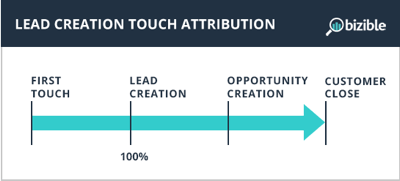
3. Last Touch Attribution
This model is the simplest model for attribution systems.
It assigns credit where a sale opportunity is created and where the end of the marketing funnel is.
It also has the smallest time window for an error to occur as the period is very short, unlike the first touch model.
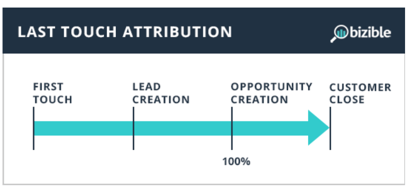
4. Last Non-Direct Touch Attribution
This is somehow more useful than the simple last touch model, because it doesn’t take into account the “Direct Traffic” which may not come from manually typing the URL but also from any traffic that doesn’t have a referral source. For instance, any social posts, social ads, or emails that don’t have a proper UTM tracking is considered direct traffic.
As a result, this model helps you avoid the troubles of “Direct Channel” data which is often deceiving.
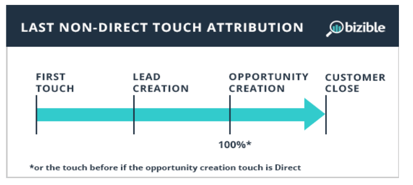
5. Last [Insert Marketing Channel] Touch Attribution
This is the last Adwords touch model, Facebook or Twitter touch model.
This is the last touch before whatever conversion you configured the analytics to measure such as lead conversion, or opportunity conversion…
While each attribution comes standard with their channel as each insights, either on FB or Adwords, uses a Last Adwords Touch Model, it’s biased to their own channel.
For example, if a visitor clicks on a Facebook ad on Monday and then a Google ad the next day and then converts, both channels model credit 100% of the conversion credit.
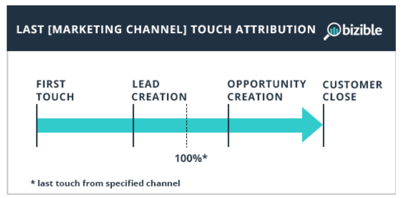
6. Linear Attribution
This method gives credit to every single touchpoint in the buyer journey.
The good thing about this method is that it’s a multi-touch model.
Its shortcoming is that it doesn’t take into account the varying impact of each touchpoint and may assign the highest credit to a channel that impacted the least in driving conversions.
For example, a prospect initially clicks on your landing page via your FB ad, stays on the page for an hour. 1 day later, they visit your site via direct search and then convert. Your landing page will get 5% of the credit while the remaining 95% goes to direct search.
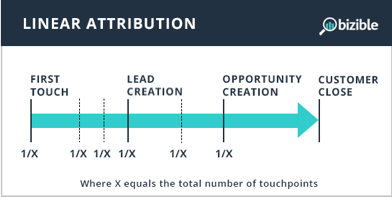
7. Time Decay Attribution
This model assigns attribution to the channels or touchpoints closest to conversion. It makes the assumption that the closer to conversion, the more influence it has.
The main problem with this model is that it ignores top of the funnel as it considers it away from conversion.
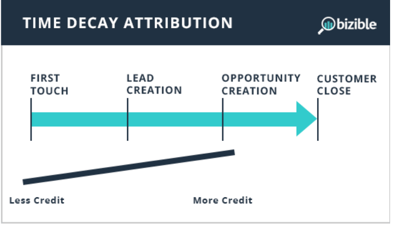
8. U-Shaped Attribution
This model focuses on lead generation.
It’s a multi-touch model that tracks every single touchpoint but emphasizes the importance of 2 key touchpoints: the anonymous first touch that brought the visitor to the door and the lead conversion touch.
Each of these touches are given 40% of the credit and the remaining 20% is split equally across the other touchpoints.
The problem is that it ignores marketing efforts beyond the conversion stage.
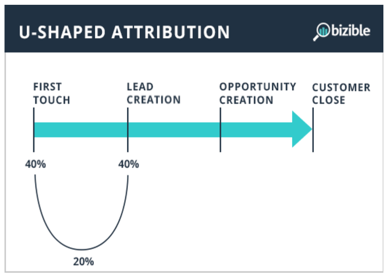
9. W-Shaped Attribution
This model takes the U-Shaped attribution to the lead opportunity stage, which is considered the end of the funnel for many organizations.
The W-Shaped gives emphasis to 3 touchpoints: First touch, lead conversion and opportunity creation touch.
Each of these 3 receives 30% while the remaining 10% is distributed equally among the remaining touchpoints.
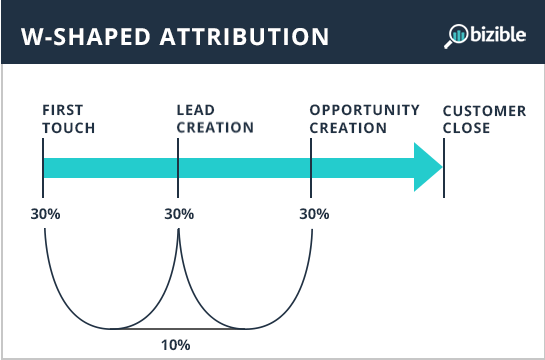
10. Full-Path Attribution (Z-Shaped)
Taking it one step further, the Full-Path model or Z-Shaped takes the attribution to include the step beyond the opportunity stage: the customer close.
In this model, each of the four touchpoints gets 22.5% of the credit and the last 10% is split equally among the remaining touchpoints.
This model is fair and accurate for organizations that do marketing to existing sales opportunities.
Adopting this method requires a close coordination between marketing and sales.
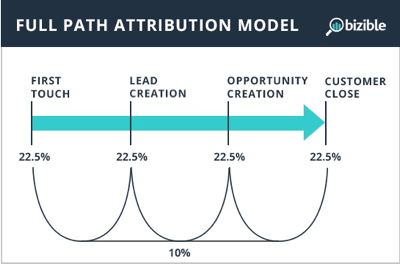
Taking it one step further, the Full-Path model or Z-Shaped takes the attribution to include the step beyond the opportunity stage: the customer close.
In this model, each of the four touchpoints gets 22.5% of the credit and the last 10% is split equally among the remaining touchpoints.
This model is fair and accurate for organizations that do marketing to existing sales opportunities.
Adopting this method requires a close coordination between marketing and sales.
Identifying the proper attribution model to better map your customer journey depends on your business objectives, marketing channels used, and the priority you assign to each in driving conversions and generating revenue. By selecting the right model for your business, you determine the most important and winning channels that you should keep focusing on to tweak your future campaigns.
Don’t forget to share this article
